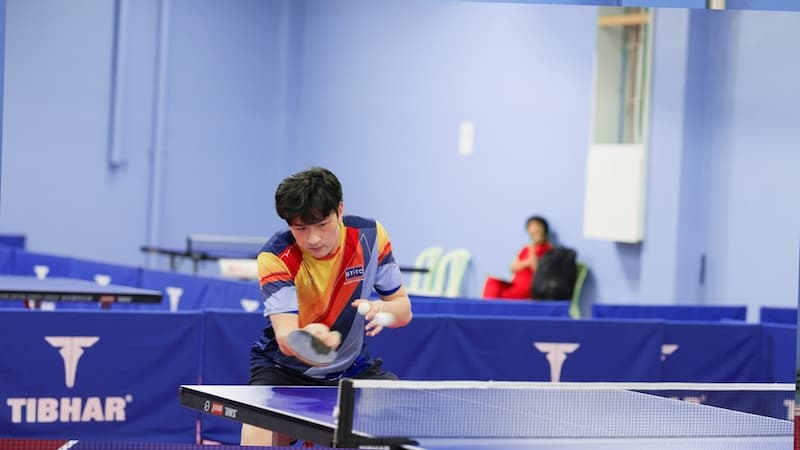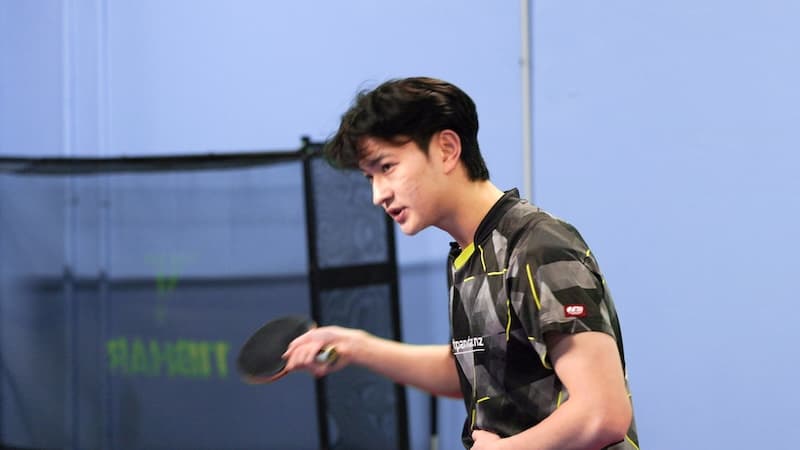The Forehand Chop in Table Tennis
Looking to add variation to your defensive game? The forehand chop is a powerful, underutilized tool that can neutralize strong attacks, disrupt your opponent's rhythm, and force awkward returns. In this guide, we’ll break down the technique step-by-step, highlight common mistakes, and give you practical drills to make your chop a reliable defensive weapon.
In modern table tennis, speed and spin dominate rallies. Attackers look to take control early with fast loops and power shots, often leaving you little time to react. This is where the forehand chop comes in—a defensive yet highly strategic shot that changes the pace of play and forces your opponent to work harder for every point.
Whether you’re facing a relentless looper or trying to build a more complete game, mastering the forehand chop is one of the best skills you can develop for control, spin variation, and rally management.
Table of Contents
Why the Forehand Chop Matters
The forehand chop isn’t just for defenders. It’s a game-changer that:
- Breaks rhythm and resets the rally against powerful loopers
- Adds heavy backspin variation your opponent must adjust to
- Builds control, touch, and defensive stability
- Creates tactical pressure, forcing high or netted returns
If you struggle when attacked aggressively, mastering the chop gives you a strategic plan B.
Step-by-Step Forehand Chop Technique

1. Start with Your Ready Position
- Lower your stance
- Weight balanced and knees bent
- Racket held waist-high with relaxed grip
2. Track the Incoming Ball
- Move into position quickly
- Adjust feet to stay balanced
- Watch the ball’s spin and speed closely
- Don’t lean or reach excessively
- Keep eyes on the contact point
3. Execute the Chop

- Swing Path: Diagonal, downward and forward—not straight down
- Racket face should be slightly open
- Contact the ball around waist height, brushing underneath for backspin
- The motion is led by the shoulder and forearm, not just wrist
- Keep the motion smooth and controlled
4. Follow Through with Balance
- Let your arm naturally finish in front of your body
- Keep momentum smooth, not jerky
- Recover to ready position immediately
Common Mistakes That Kill Your Chop
These are the exact errors we spot in match reviews on ElevateYourPing.
-
Too much wrist
❌ Leads to weak or inconsistent spin
✅ Fix: Engage shoulder and forearm more -
Standing too upright
❌ Reduces balance and reach
✅ Fix: Lower your stance and stay agile -
Choppy motion
❌ Breaks rhythm and spin flow
✅ Fix: Focus on one fluid motion -
Stiff grip
❌ Reduces feel and control
✅ Fix: Keep grip firm but relaxed
Struggling to Improve? We Can Help.
Get personalized coaching feedback on your gameplay — with clear drills and tips to fix what’s holding you back.
Send Your Clip →
“Alex is not just a skilled player but also a fantastic coach with years of experience competing at the highest international levels. His deep understanding of the game — from advanced strategy to fine-tuning technique — makes him an invaluable teacher.”
Practical Drills to Sharpen the Chop
Partner Drill: Forehand Chop Rally
- Partner feeds consistent backspin to your forehand
- Focus on heavy spin, low trajectory, and deep placement
Solo Drill: Shadow Chop Reps
- Practice in front of a mirror or film yourself
- Do 10 reps focusing on technique
- Then add footwork and recovery
Robot Drill: Repetitive Chop
- Set robot to backspin
- Return every ball with a forehand chop
- Gradually increase spin or speed for challenge
- Track consistency percentage each session
Want a full plan to develop your defensive game?
Pro Tips to Add Deception and Variation
- Change Spin Intensity: Mix heavy and light chops to draw errors
- Vary Depth: Short chops bring opponents in, opening space for counters
These adjustments make your chop more than a survival shot—it becomes a weapon.
Final Thoughts: Train for Variety
A well-timed forehand chop can disrupt attacking patterns, buy you time, and frustrate opponents. Building this shot gives you:
-
A reliable defensive option under pressure
-
More control over spin and placement
-
A tactical edge at every level

